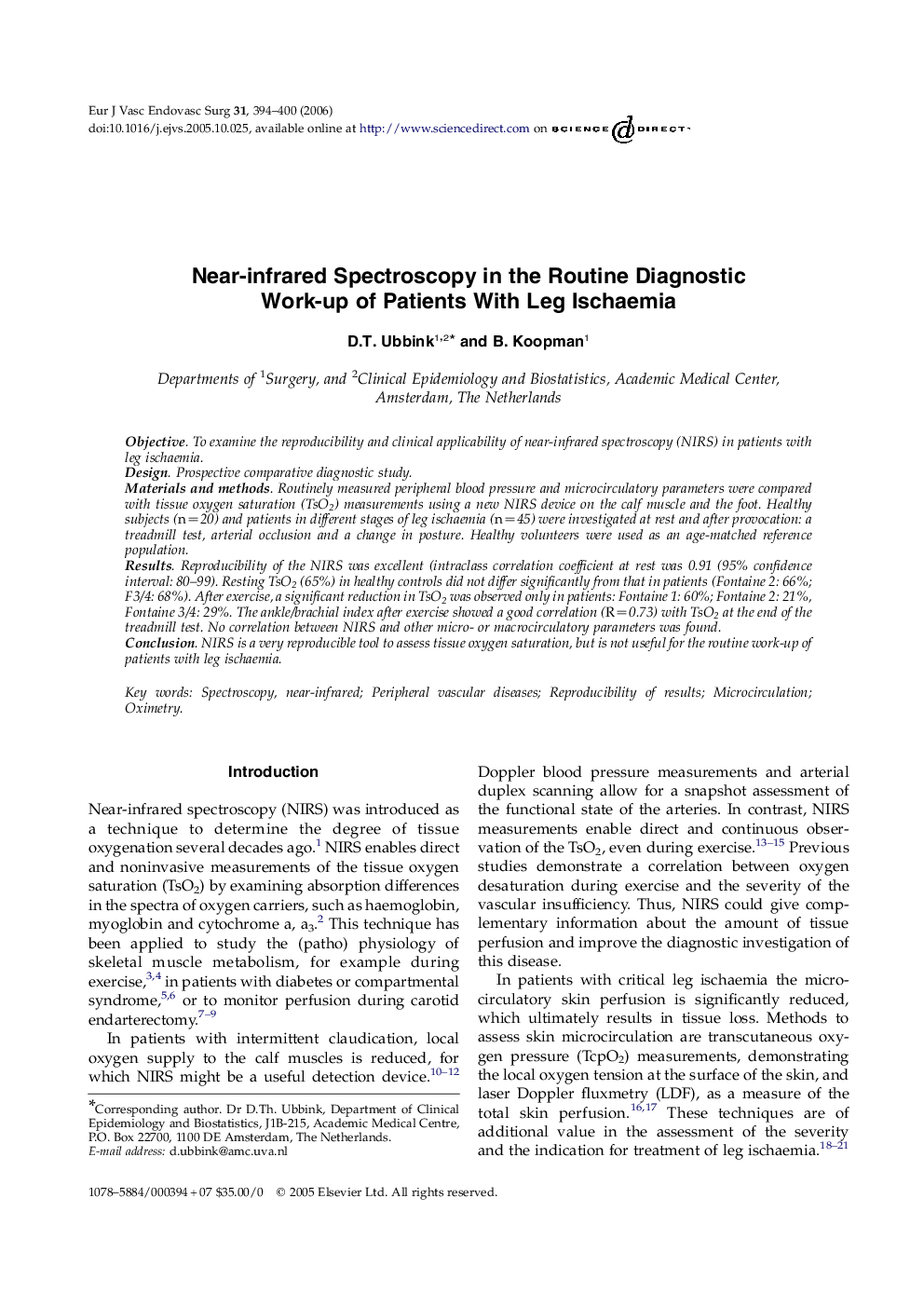| Article ID | Journal | Published Year | Pages | File Type |
|---|---|---|---|---|
| 2915127 | European Journal of Vascular and Endovascular Surgery | 2006 | 7 Pages |
ObjectiveTo examine the reproducibility and clinical applicability of near-infrared spectroscopy (NIRS) in patients with leg ischaemia.DesignProspective comparative diagnostic study.Materials and methodsRoutinely measured peripheral blood pressure and microcirculatory parameters were compared with tissue oxygen saturation (TsO2) measurements using a new NIRS device on the calf muscle and the foot. Healthy subjects (n=20) and patients in different stages of leg ischaemia (n=45) were investigated at rest and after provocation: a treadmill test, arterial occlusion and a change in posture. Healthy volunteers were used as an age-matched reference population.ResultsReproducibility of the NIRS was excellent (intraclass correlation coefficient at rest was 0.91 (95% confidence interval: 80–99). Resting TsO2 (65%) in healthy controls did not differ significantly from that in patients (Fontaine 2: 66%; F3/4: 68%). After exercise, a significant reduction in TsO2 was observed only in patients: Fontaine 1: 60%; Fontaine 2: 21%, Fontaine 3/4: 29%. The ankle/brachial index after exercise showed a good correlation (R=0.73) with TsO2 at the end of the treadmill test. No correlation between NIRS and other micro- or macrocirculatory parameters was found.ConclusionNIRS is a very reproducible tool to assess tissue oxygen saturation, but is not useful for the routine work-up of patients with leg ischaemia.
